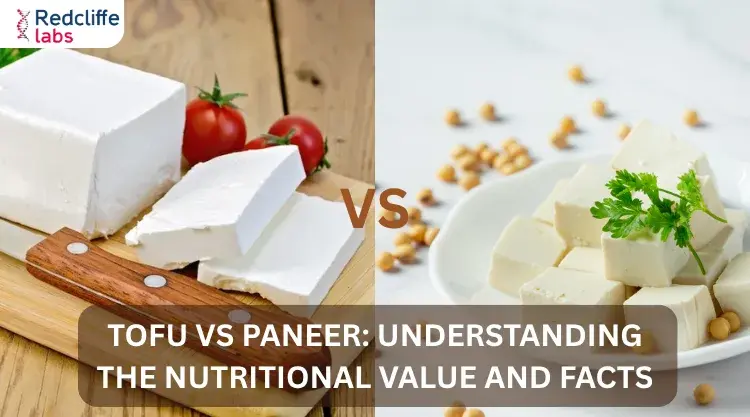Ragi Benefits: Uncovering the Hidden Power of This Millet

Medically Reviewed By
Dr Divya Rohra
Written By Kirti Saxena
on Mar 4, 2024
Last Edit Made By Kirti Saxena
on Apr 1, 2024

Ragi, also known as finger millet, is a cereal widely consumed by the people of South India and many African countries. It is a powerhouse of calcium, containing nearly 50% of the recommended daily intake in just 100g. Whether you're looking to boost your energy levels, manage weight, or enhance overall well-being, ragi has something to offer. Ragi is a good source of iron, making it beneficial for bone health, preventing osteoporosis, and combating anemia. The essential nutrients and fiber in ragi help to regulate digestion and prevent constipation. The low glycemic index prevents blood sugar spikes. It controls appetite, prevents overeating, and helps to control weight. Let's explore more about Ragi's health benefits.
Nutritional value in Ragi
The nutritional value of ragi per 100g is-
- Calories- approx 336 calories.
- Protein- Around 7.6 g
- Fat- approx 1.3 g
- Carbohydrates- 72 g
- Fiber - 3.6 grams.
- Calcium- 344 mg
- Iron- 3.9 mg
- Magnesium- 137 mg
- Phosphorus- Roughly 287 mg
- Potassium- Around 408 mg
- Zinc- approx 2.7 mg

7 Surprising Health Benefits of Ragi
The superfood known as Ragi is packed with many surprising health benefits that will leave you wondering why you haven't already embraced it. Let's explore the health benefits in detail-
Rich in calcium & Iron
Ragi is an excellent source of calcium, containing nearly 50% of the recommended daily intake in just 100 g. It is a good source of iron, making it a good choice for people at risk of osteoporosis, such as older adults and postmenopausal women.
Promotes gut health
Ragi is a good fiber source, which helps regulate digestion and prevent constipation. Fiber helps to keep the digestive system moving smoothly and can also help prevent constipation and promote the growth of healthy gut bacteria. Ragi's high fiber content also makes you feel full for longer, which can aid in weight management. This can improve overall gut health and immunity. So adding ragi to your diet is delicious and an effective way to boost your gut health!
Manage Diabetes
Ragi has a low glycemic index (GI), which releases glucose in the blood. Unlike high-GI foods that cause spikes and crashes in blood sugar, ragi helps maintain steady levels, making it a good option for people with diabetes or prediabetes. The fiber in ragi slows down the digestion and absorption of carbohydrates, further preventing blood sugar spikes. It also improves insulin sensitivity and the body's ability to utilize insulin effectively. Moreover, to monitor and manage your blood sugar levels, take regular Hb1AC tests.
Aids in weight management
Fiber takes longer to digest, keeping you fuller, reducing calorie intake, and curbing cravings. This leads to naturally consuming less throughout the day, contributing to weight management. However, as compared to other grains, ragi has fewer calories. It is a decent source of protein and helpful in building and maintaining muscle mass. People who have gluten sensitivities or celiac disease can adopt ragi as a gluten-free alternative. This allows them to enjoy delicious meals without compromising their gut health or weight management goals.
Lowers cholesterol Levels
Lecithin in ragi helps lower bad cholesterol (LDL) and raise good cholesterol (HDL). This makes it a safe and beneficial food option for people with cholesterol issues. Replacing high-cholesterol foods with ragi can naturally reduce your cholesterol levels. In addition, the antioxidants combat oxidative stress and inflammation, linked to cholesterol build-up in the arteries. Ragi neutralizes these harmful factors, preventing cholesterol accumulation and promoting a healthier cardiovascular system. Take regular lipid tests to know your cholesterol levels and take charge of your health.
Promotes healthy hair and skin
Ragi is a natural source of essential amino acids, the building blocks of proteins. Keratin, the main protein in hair, gets a boost from ragi, leading to stronger, thicker, and less prone to breakage hair. The iron content in ragi ensures proper blood flow to the scalp and nourishes hair follicles for healthy growth. The antioxidants in ragi combat free radicals and oxidative stress, preventing skin damage and delaying the signs of aging. This means less wrinkles and a more radiant complexion. If you are persistently experiencing hair loss or skin issues, it might be due to certain nutritional deficiencies. Take a Vitamins & Mineral Screening to know your health status and get treatment to optimize symptoms.
Boosts immunity power
People with low immunity must add ragi to their diet. It is packed with antioxidants, helps to protect cells from damage, boosts the immune system, and fights off infections. In addition, it is rich in iron, calcium, magnesium, and phosphorus. These minerals are vital for various immunological processes. By neutralizing these harmful elements, ragi helps keep your immune system strong and resilient.

How To Include Ragi In Diet?
Ragi is a superfood that offers multiple essential nutrients for the growth and development of the body. Below are some ragi dishes you can try at home -
- Ragi roti or parathas
- Ragi dosa or uttapam
- Ragi rice
- Ragi Upma
- Puttu
- Ragi laddoos
Elevate Your Health with Ragi Benefits
From boosting immunity to promoting healthy hair and skin, ragi has many health benefits. So, what is holding you to add this superfood to your diet? This powerful cereal is a rich source of vitamins, minerals, fiber, and antioxidants, making it a valuable addition to the diet. So whether you want to manage blood sugar, improve gut health, or simply elevate your overall well-being, ragi offers a delicious and effective solution. So, embrace this ragi by adding it to your diet and unlock the true potential of ragi for a healthier, happier you.



